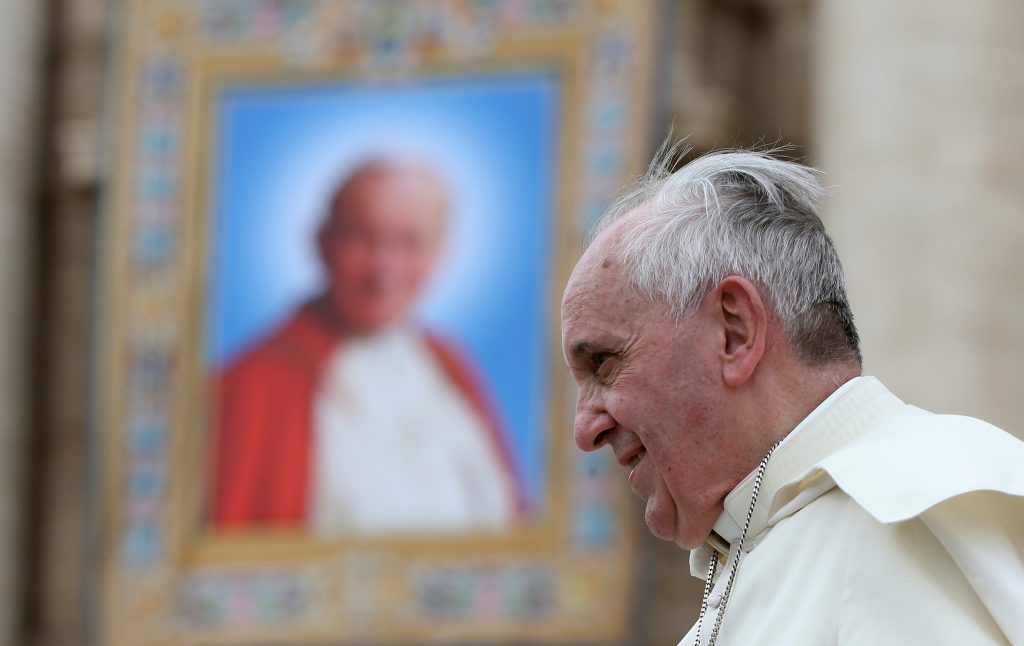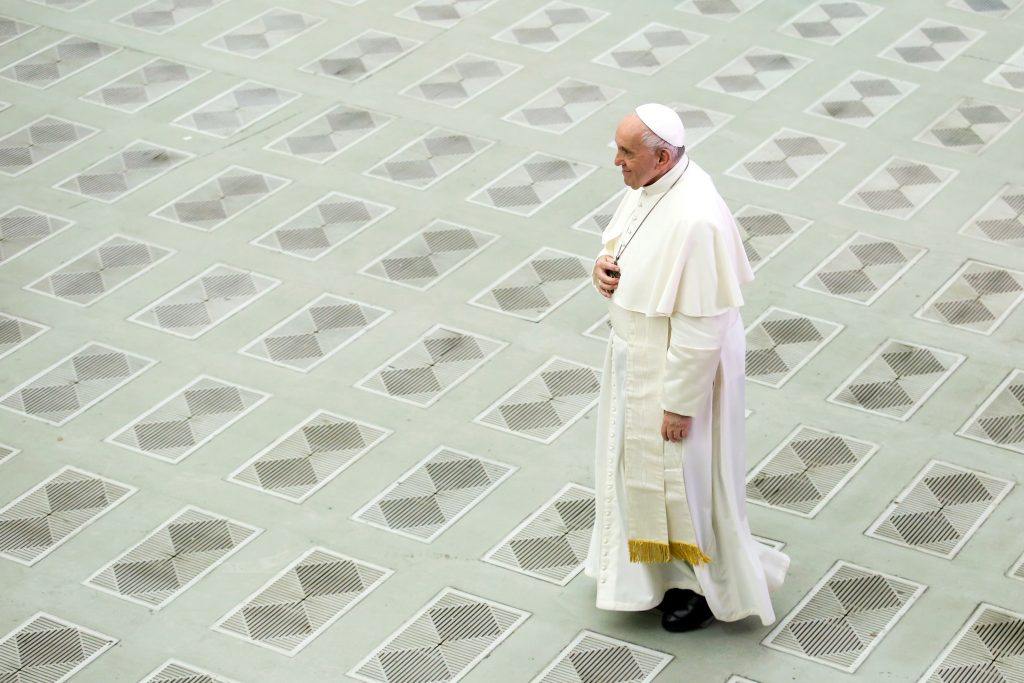
When Pope John Paul II was admitted to Rome’s Gemelli hospital on July 12, 1992, he told the world himself a few hours earlier during his regular Sunday address in St. Peter’s Square.
“I would like to let you in on a secret,” he said before revealing that he would enter hospital that night. His departure from the Vatican, the crowds lining his motorcade route, and his arrival at the hospital’s front entrance in a black Mercedes convertible were broadcast on television.
When Pope Francis entered the same hospital last Sunday, the Vatican announced it in a two-paragraph statement after he had arrived in a small car, slipped inside and already was being prepared for colon surgery.
The two episodes show the differences in the two popes’ styles of dealing with health, privacy and communication.
Since Francis entered the hospital on Sunday, the Vatican has issued five very short statements with essential information.
Wednesday’s statement said his recovery was “regular and satisfactory,” that he was eating regularly, no longer receiving medication intravenously, and that a biopsy confirmed that he had been suffering from “severe diverticular stenosis,” or a narrowing of the colon.
When John Paul was in the same hospital – nearly 10 times in his 27 years as pontiff – it was the doctors who issued detailed medical bulletins, talked to reporters in the lobby and became minor celebrities on the evening news.
Politicians and others showed up at the hospital even if they could not see John Paul. They were received by his secretary or another Vatican official, signed a visitors’ book and recorded by the television cameras.
The guidance for a low-key hospital stay and less detailed medical statement is believed to come directly from Pope Francis, who guards his privacy more closely than John Paul.

Each pope different
“Each famous person, including a pope, is different,” said a person who deals with communications at a major medical institution in Italy.
“Hospitals are in a bind when dealing with famous people because there are strict privacy laws but the public wants information. It usually falls on the patient to decide how much to disclose,” said the person, who spoke on the condition of anonymity.
Early on Wednesday at the Gemelli there were just two television crews and a handful of photographers. They were relegated to a parking lot and not allowed in the lobby.
During some of John Paul’s stays, the lobby became a media whirlwind, with television reporters trying to get sound bites from doctors, patients and visitors.
On Wednesday morning at the Gemelli, the lobby bustled but there was nothing to indicate that a VIP was on the 10th floor of the sprawling Catholic-run hospital.
A part of that floor is permanently reserved for popes and includes its own intensive care unit.
Pope John Paul, who became pope as a fit 58-year-old, had numerous health issues during his papacy, starting with the effects of being shot in the abdomen by a would-be assassin on May 13, 1981, in St. Peter’s Square.
During the 1992 hospitalisation he had an intestinal tumor removed. He later dislocated his shoulder, broke his femur, suffered from severe Parkinson’s Disease and needed a tracheotomy to help him breathe weeks before he died in 2005.
He suffered at length and in public and even wrote a document on how suffering can bring spiritual gain.
Pope Francis once told a reporter that in case of an assassination attempt, he wanted a quick death because he is afraid of pain.
Source: Licas Philippines
0 Comments